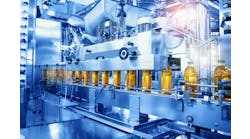Fire and explosions are major concerns in industrial plants where flammable gases, liquids, vapors or combustible fibers or dust are present normally or under abnormal conditions. Field devices such as illumination, sensors, solenoids and actuators used in these locations must be properly rated and labeled.
This, of course, includes the human-machine interface (HMI), which often needs to be located where the action is in these hazardous environments. You can design your own system to meet the requirements, but off-the-shelf options for hazardous-area HMIs should be considered, as there are many requirements to follow to ensure operator safety.
Whether the area is a hazardous location defined via North America’s class/division codes or international Atmosphere Explosible (ATEX, European Directive 2014/34/EC) or similar codes, most hazardous-area electrical device installation instructions clearly point out that planning installation, commissioning, operation and maintenance is the end user’s responsibility.
The suppliers of this hazardous-area-rated equipment make it clear that the installation and commissioning of the devices require qualified, trained personnel. If the HMI, for example, is not used for its intended purpose, protection of the user is not guaranteed.
Starting with the area classification provided by the location owner, do you really want to assemble all the components needed to operate an HMI in the hazardous area, or should you buy something off the shelf? Well, the details in National Fire Protection Association (NFPA) 70, National Electric Code (NEC) articles 500 to 506, are many, so read carefully.
An HMI on a machine or process in a hazardous area consists of much more than just a graphic display. The display needs to be mounted in an enclosure, and usually more than just a basic enclosure is required, especially in Class I, Div. 1 areas. HMIs mounted in NEMA 4X stainless-steel enclosures behind Plexiglass is the norm. Purging—the right type of purging—of the enclosure is also required.
There are many other things to consider if designing your own hazardous-area HMI. It may be behind Plexiglass, so consider the viewing angle and touchscreen access. Not only may the graphic display be difficult to see, the touchscreen may also not be accessible in Div. 1 areas.
There will be considerations for the peripherals—for example, the keyboard and mouse must also be suitable for use in the location. Even if the device is protected by an intrinsically safe barrier, the keyboard or mouse itself must be labeled for use in the location with the cables carefully isolated from all non-intrinsically safe circuits in the enclosure.
And even the type of HMI/display inside the purged enclosure is important. For example, use of a flat-panel display may be required to minimize power consumption and the related heat generation, which could cause an explosion depending on the group rating, or type of flammable gas, for example, in the area.
Ensuring a safe and proper design in a hazardous location is a big task that many industrial suppliers have recognized, so there are a variety of graphic and text terminals on the market to provide machine and process monitoring and control in hazardous areas.
To keep the cost down, these product offerings are often intrinsically safe devices. As with any electrical device in a hazardous area, approval for use in that area, such as Class I, Div. 1, or ATEX zones 1 and 2, must be clearly indicated.
Manufacturers provide very detailed and complete information related to certification of compliance of electrical devices for use in hazardous locations. With the hazardous-location classification in hand, check the HMI specifications very carefully while shopping around.
When searching for a keyboard or mouse to connect to the HMI or graphic terminal, be sure to search carefully through the documentation and certificate of compliance. While the keyboard may be able to operate in a Class I environment, with flammable vapors and liquids present, it cannot do it all the time, such as in a Div. 1 area. And many hazardous-area devices may be certified for Class 1 areas but cannot be operated in a Class II area where explosive powders are present.
There are many differences in the national and international specifications, as well. In NEC, Article 505, it's noted that division-classified products may be installed in zone-classified locations, but the opposite is not true. The zone classification utilizes protection methods not available in the class/division scheme. Look at the labels.
A variety of protocols are used to connect the HMI in the hazardous area to the PLC or PC-based control systems, which are often located in safe areas. Industrial Ethernet protocols such as EtherNet/IP, Profinet and many others are available. Consider these protocols to minimize connections. Also, consider the use of a keyboard, video and mouse (KVM) extender unit to connect to a remote monitor, keyboard and mouse in the hazardous area.






